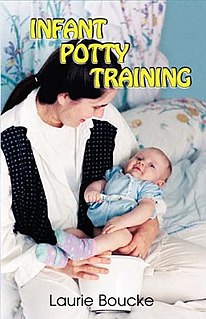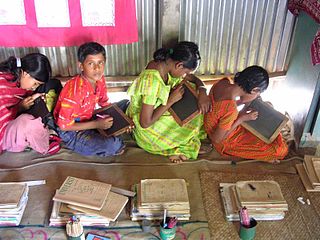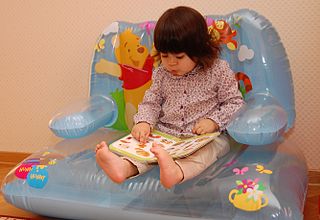 W
WDevelopmental psychology is the scientific study of how and why human beings change over the course of their life. Originally concerned with infants and children, the field has expanded to include adolescence, adult development, aging, and the entire lifespan. Developmental psychologists aim to explain how thinking, feeling, and behaviors change throughout life. This field examines change across three major dimensions: physical development, cognitive development, and social emotional development. Within these three dimensions are a broad range of topics including motor skills, executive functions, moral understanding, language acquisition, social change, personality, emotional development, self-concept, and identity formation.
 W
WThe autism spectrum encompasses a range of neurodevelopmental conditions, including autism and Asperger syndrome, generally known as autism spectrum disorders (ASD). Individuals on the autistic spectrum experience difficulties with social communication and interaction and also exhibit restricted, repetitive patterns of behavior, interests, or activities. Symptoms are typically recognized between one and two years of age. However, a lot of children are not finally diagnosed until they are older. Final diagnosis could still be given as an adolescent or even as an adult. The term "spectrum" refers to the variation in the type and severity of symptoms. Those in the mild range may function independently, while those with moderate to severe symptoms may require more substantial support in their daily lives. Long-term problems may include difficulties in performing daily tasks, creating and keeping relationships, and maintaining a job.
 W
WCareer consolidation is a stage of adult development which involves "expanding one's personal identity to assume a social identity within the world of work." This stage was developed by George Vaillant in 1977 and added to Erikson's stages of psychosocial development, between intimacy vs. isolation and generativity vs. stagnation. This stage covers the ages of 25 to 35. Vaillant contrasts career consolidation with self-absorption.
 W
WChild development involves the biological, psychological and emotional changes that occur in human beings between birth and the conclusion of adolescence. The main 3 stages of life include early childhood, middle childhood, and adolescence. Early childhood typically ranges from infancy to the age of 6 years old. During this period, development is significant, as many of life's milestones happen during this time period such as first words, learning to crawl, and learning to walk. There is speculation that middle childhood, or ages 6-12 are the most crucial years of a child's life, ranging from the starts of some sorts of formal schooling to the beginning of puberty, and this is also the period where many children start to gain a more sense of self. Adolescence, is the stage of life that typically starts around the time puberty hits, all the way up until legal adulthood. In the course of development, the individual human progresses from dependency to increasing autonomy. It is a continuous process with a predictable sequence, yet has a unique course for every child. It does not progress at the same rate and each stage is affected by the preceding developmental experiences. Because genetic factors and events during prenatal life may strongly influence developmental changes, genetics and prenatal development usually form a part of the study of child development. Related terms include developmental psychology, referring to development throughout the lifespan, and pediatrics, the branch of medicine relating to the care of children.
 W
WChild Identity is not only a psychological structure, but also a complex subject of contemporary humanitarian science. Identity formation is a complex process that is never completed. When we research the problems of identity we want to answer questions 'Who we are?', 'Do we choose our identity?', 'Is identity given to us or do we create our own?', etc. In a world of change, children are faced with many questions and struggles as they sort out their multiple identities. Children begin to ask identity questions at an early age. Who am I? Who is my family? Where do I belong? Why does my family celebrate some holidays and not others? These are all standard questions children ask to determine how they fit into their world.
 W
WIn developmental psychology and developmental biology, a critical period is a maturational stage in the lifespan of an organism during which the nervous system is especially sensitive to certain environmental stimuli. If, for some reason, the organism does not receive the appropriate stimulus during this "critical period" to learn a given skill or trait, it may be difficult, ultimately less successful, or even impossible, to develop certain associated functions later in life. Functions that are indispensable to an organism's survival, such as vision, are particularly likely to develop during critical periods. "Critical period" also relates to the ability to acquire one's first language. Researchers found that people who passed the "critical period" would not acquire their first language fluently.
 W
WEgocentrism is the inability to differentiate between self and other. More specifically, it is the inability to accurately assume or understand any perspective other than one's own.
 W
WEnvironmental enrichment is the stimulation of the brain by its physical and social surroundings. Brains in richer, more stimulating environments have higher rates of synaptogenesis and more complex dendrite arbors, leading to increased brain activity. This effect takes place primarily during neurodevelopment, but also during adulthood to a lesser degree. With extra synapses there is also increased synapse activity, leading to an increased size and number of glial energy-support cells. Environmental enrichment also enhances capillary vasculation, providing the neurons and glial cells with extra energy. The neuropil expands, thickening the cortex. Research on rodent brains suggests that environmental enrichment may also lead to an increased rate of neurogenesis.
 W
WERG theory is a theory in psychology proposed by Clayton Alderfer.
 W
WErikson's stages of psychosocial development, as articulated in the second half of the 20th century by Erik Erikson in collaboration with Joan Erikson, is a comprehensive psychoanalytic theory that identifies a series of eight stages that a healthy developing individual should pass through from infancy to late adulthood.
 W
WThe term generativity was coined by the psychoanalyst Erik Erikson in 1950 to denote "a concern for establishing and guiding the next generation." He first used the term while defining the Care stage in his theory of the stages of psychosocial development.
 W
WImaginary friends are a psychological and social phenomenon where a friendship or other interpersonal relationship takes place in the imagination rather than external physical reality. Although they may seem very real to their creators, children usually understand that their imaginary friends are not real. The first studies focusing on imaginary friends are believed to have been conducted during the 1890s. There is little information about the development and the appearance of imaginary friends in children. However, Klausen and Passman (2007) report that imaginary companions were originally described as being supernatural creatures and spirits that were thought to connect people with their past lives. Adults in early historic times had entities such as household gods and guardian angels, and muses that functioned as imaginary companions to provide comfort, guidance and inspiration for creative work. Eventually, the phenomenon of imaginary companions passed on to children. The era when children began having imaginary friends is unknown, but it is possible the phenomenon appeared in the mid–19th century when childhood was emphasized as an important time to play and imagine.
 W
WIn a Different Voice: Psychological Theory and Women's Development is a book on gender studies by American professor Carol Gilligan, published in 1982, which Harvard University Press calls "the little book that started a revolution".
 W
WInfant crying is the crying of infants as a response to an internal or external stimulus. Infants cry as a form of basic instinctive communication. Essentially, newborns are transitioning from life in the womb to the external environment. Up to 27% of parents describe problems with infant crying in the first four months. Up to 38% identify a problem with their infant crying within the first year. Parents can be concerned about the amount of time that their infant cries, how the infant can be consoled, and disrupted sleeping patterns. Colic is used as a synonym for excessive crying of infants, even though colic may not be the cause of excessive crying.
 W
WInfant Potty Training is both the name of a means of toilet training and the title of a book by author Laurie Boucke. The complete book title is Infant Potty Training: A Gentle and Primeval Method Adapted to Modern Living. It is an expansion of ideas that were originally presented in a small self-published volume called Trickle Treat in 1991. Infant Potty Training was first published in 2000, is now in its third edition (2008), and has editions in German, Dutch, Italian and Japanese. Infant potty training is traditionally used in at least 80 countries.
 W
WKeeper of the Meaning is a stage of adult development which involves the "conservation and preservation of the collective products of mankind". This stage was developed by George Vaillant in 1993 and added to Erikson's stages of psychosocial development, between generativity vs. stagnation and integrity vs. despair. This stage covers the ages of 60 to 75. Vaillant contrasts keeper of the meaning with rigidity.
 W
WThe Kewpie doll effect is a term used in developmental psychology derived from research in ethology to help explain how a child's physical features, such as lengthened forehead and rounded face, motivate the infant's caregiver to take care of them. The child's physical features are said to resemble a Kewpie doll.
 W
WLearning is the process of acquiring new understanding, knowledge, behaviors, skills, values, attitudes, and preferences. The ability to learn is possessed by humans, animals, and some machines; there is also evidence for some kind of learning in certain plants. Some learning is immediate, induced by a single event, but much skill and knowledge accumulate from repeated experiences. The changes induced by learning often last a lifetime, and it is hard to distinguish learned material that seems to be "lost" from that which cannot be retrieved.
 W
WMaslow's hierarchy of needs is a theory in psychology proposed by Abraham Maslow in his 1943 paper "A theory of Human Motivation" in Psychological Review. There is little scientific basis to the theory: Maslow himself noted this criticism. Maslow subsequently extended the idea to include his observations of humans' innate curiosity. His theories parallel many other theories of human developmental psychology, some of which focus on describing the stages of growth in humans. He then created a classification system which reflected the universal needs of society as its base and then proceeding to more acquired emotions.
 W
WMental age is a concept related to intelligence. It looks at how a specific individual, at a specific age, performs intellectually, compared to average intellectual performance for that individual's actual chronological age. The intellectual performance is based on performance in tests and live assessments by a psychologist. The score achieved by the individual is compared to the median average scores at various ages, and the mental age is derived such that the individual's score equates to the average score at age x.
 W
WNature-deficit disorder is the idea that human beings, especially children, are spending less time outdoors, and the belief that this change results in a wide range of behavioral problems. This disorder is not recognized in any of the medical manuals for mental disorders, such as the ICD-10 or the DSM-5.
 W
WWithin the work of the Austrian psychoanalyst Wilhelm Reich (1897–1957), orgastic potency is a human's natural ability to experience an orgasm with certain psychosomatic characteristics and resulting in full sexual gratification.
 W
WPointing is a gesture specifying a direction from a person's body, usually indicating a location, person, event, thing or idea. It typically is formed by extending the arm, hand, and index finger, although it may be functionally similar to other hand gestures. Types of pointing may be subdivided according to the intention of the person, as well as by the linguistic function it serves.
 W
WIn Freudian psychology, psychosexual development is a central element of the psychoanalytic sexual drive theory. Freud believed that personality developed through a series of childhood stages in which pleasure seeking energies from the id became focused on certain erogenous areas. An erogenous zone is characterized as an area of the body that is particularly sensitive to stimulation. The five psychosexual stages are the oral, the anal, the phallic, the latent, and the genital. The erogenous zone associated with each stage serves as a source of pleasure. Being unsatisfied at any particular stage can result in fixation. On the other hand, being satisfied can result in a healthy personality. Sigmund Freud proposed that if the child experienced frustration at any of the psychosexual developmental stages, they would experience anxiety that would persist into adulthood as a neurosis, a functional mental disorder.
 W
WThe most commonly used definition of school belonging comes from a 1993 academic article by researchers Carol Goodenow and Kathleen Grady, who describe school belonging as "the extent to which students feel personally accepted, respected, included, and supported by others in the school social environment." The construct of school belonging involves feeling connected with and attached to one's school. It also encompasses involvement and affiliation with one's school community. Conversely, students who do not feel a strong sense of belonging within their school environment are frequently described as being alienated or disaffected. There are a number of terms within educational research that are used interchangeably with school belonging, including school connectedness, school attachment, and school engagement.
 W
WSpeech repetition is when one individual speaks the sounds they've heard another person pronounce or say. In other words, it is the saying by one individual of the spoken vocalizations made by another individual. Speech repetition requires the person repeating the utterance to have the ability to map the sounds they hear from the other person's oral pronunciation to similar places and manners of articulation in their own vocal tract.
 W
WA stranger is a person who is unknown to another person or group. Because of this unknown status, a stranger may be perceived as a threat until their identity and character can be ascertained. Different classes of strangers have been identified for social science purposes, and the tendency for strangers and foreigners to overlap has been examined.
 W
WToilet training is the process of training someone, particularly a young child or infant, to use the toilet for urination and defecation. Attitudes toward training in recent history have fluctuated substantially, and may vary across cultures and according to demographics. Many of the contemporary approaches to toilet training favor a behaviouralism- and cognitive psychology-based approach.
 W
WU-shaped development, also known as U-shaped learning, is the typical pattern by which select physical, artistic, and cognitive skills are developed. It is called “U” shape development because of the shape of the letter U in correlation to a graph, skills developed in the “U shaped” fashion begin on a high position on a graph's Y-axis. The skills start out at a high performance level and over time the skills descend to a lower position on the Y-axis. After another period of time the skill once again ascends to a higher position on the y-axis. A "U" shaped time line is created of the skills development. U-shaped development can be seen in cognitive skills such as learning new words, or doing high-level algorithms in mathematics. The skill can also be artistic such as painting or playing a musical instrument, and physical skills such a walking and weight lifting.
 W
WVocabulary development is a process by which people acquire words. Babbling shifts towards meaningful speech as infants grow and produce their first words around the age of one year. In early word learning, infants build their vocabulary slowly. By the age of 18 months, infants can typically produce about 50 words and begin to make word combinations.